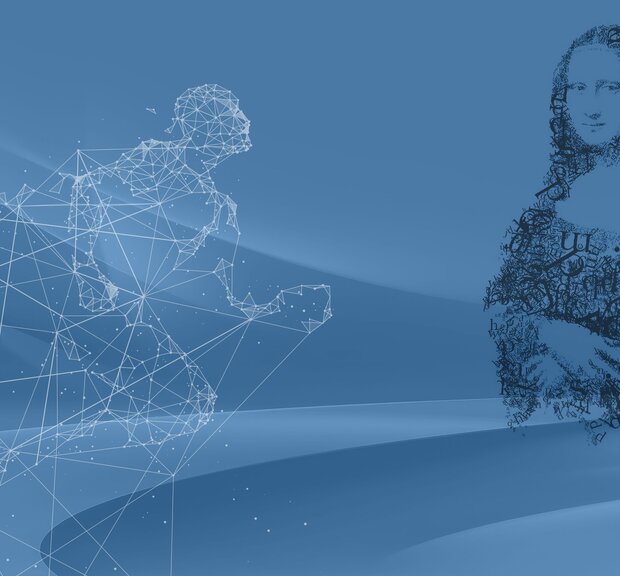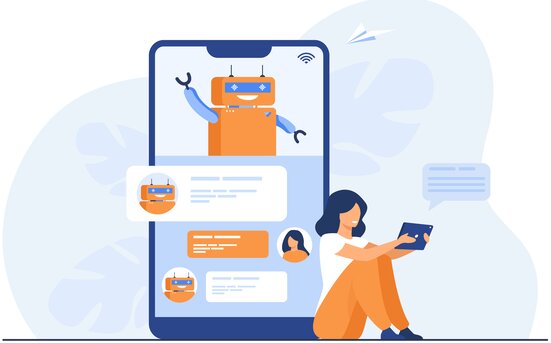
Chatbots for you: Clever, fast, effective
Chatbots play a key role in the dynamic development of digital interactions. However, these intelligent virtual assistants are by no means uniform, but have different characteristics, including internal and external chatbots in particular. Let's take a closer look at how these two types of chatbots work and find out what concrete added value they offer in different contexts.
Chatbots work by using artificial intelligence (AI) and machine learning to enable natural language processing and human-like interactions. When a user makes a request, whether in written or spoken form, the chatbot goes through several steps to generate an appropriate response.
The first phase involves capturing the user's request. This is followed by language processing, in which the chatbot uses natural language processing technologies to interpret the context and the user's intention. Based on this interpretation, the chatbot processes the request using predefined algorithms and models that use machine learning and neural networks.
The generated response can be predefined or react dynamically to the user's request. Modern chatbots are able to retain the context of the conversation and apply what they have learned to future interactions. This capability enables continuous improvement of performance and adaptation to user needs.
The interaction does not end after a single request. Users can continue to communicate with the chatbot, which can respond flexibly to different requests. Thanks to these technologies, chatbots offer an efficient, scalable and round-the-clock option for interaction between humans and machines. Their potential extends across various areas of application, from customer support and information provision to the automation of tasks.

Chatbots are playing an increasingly prominent role in the dynamic environment of digital interactions, with their applications being diverse and tailored to different contexts. Within this multifaceted landscape of intelligent virtual assistants, internal chatbots play a particularly important role. An outstanding example of innovative internal chatbots is Microsoft CoPilot, an AI-supported coding assistant designed specifically for developers.
These internal chatbots are designed to optimize the workflow within companies, be it by improving internal communication, supporting work processes or, as in the case of CoPilot, increasing efficiency in the development process. The focus here is on creating a seamless and effective working environment in which employees are supported in an intelligent way to complete their tasks faster and more precisely.
Chatbots are playing an increasingly prominent role in the dynamic environment of digital interactions, with their applications being diverse and tailored to different contexts. Within this multifaceted landscape of intelligent virtual assistants, internal chatbots play a particularly important role. An outstanding example of innovative internal chatbots is Microsoft CoPilot, an AI-supported coding assistant designed specifically for developers.
These internal chatbots are designed to optimize the workflow within companies, be it by improving internal communication, supporting work processes or, as in the case of CoPilot, increasing efficiency in the development process. The focus here is on creating a seamless and effective working environment in which employees are supported in an intelligent way to complete their tasks faster and more precisely.
External chatbots, on the other hand, are designed to interact with external parties, such as customers or website visitors. They form the interface between your company and the outside world by providing information, processing requests and even facilitating transactions. These chatbots not only help to improve communication with customers, but can also create an impressive user experience that increases brand value.
By understanding the functionalities and specific added value of internal and external chatbots, companies can address their individual requirements in a targeted manner. This tailored implementation makes it possible to increase efficiency, optimize customer service and ultimately take digital interaction to a new level.

External chatbots, on the other hand, are designed to interact with external parties, such as customers or website visitors. They form the interface between your company and the outside world by providing information, processing requests and even facilitating transactions. These chatbots not only help to improve communication with customers, but can also create an impressive user experience that increases brand value.
By understanding the functionalities and specific added value of internal and external chatbots, companies can address their individual requirements in a targeted manner. This tailored implementation makes it possible to increase efficiency, optimize customer service and ultimately take digital interaction to a new level.
Internal chatbots:
External chatbots:
We are more than just a service provider - think of us as your partner. Together we will discover the potential of artificial intelligence in your company.
Copyright © 2025by avinci